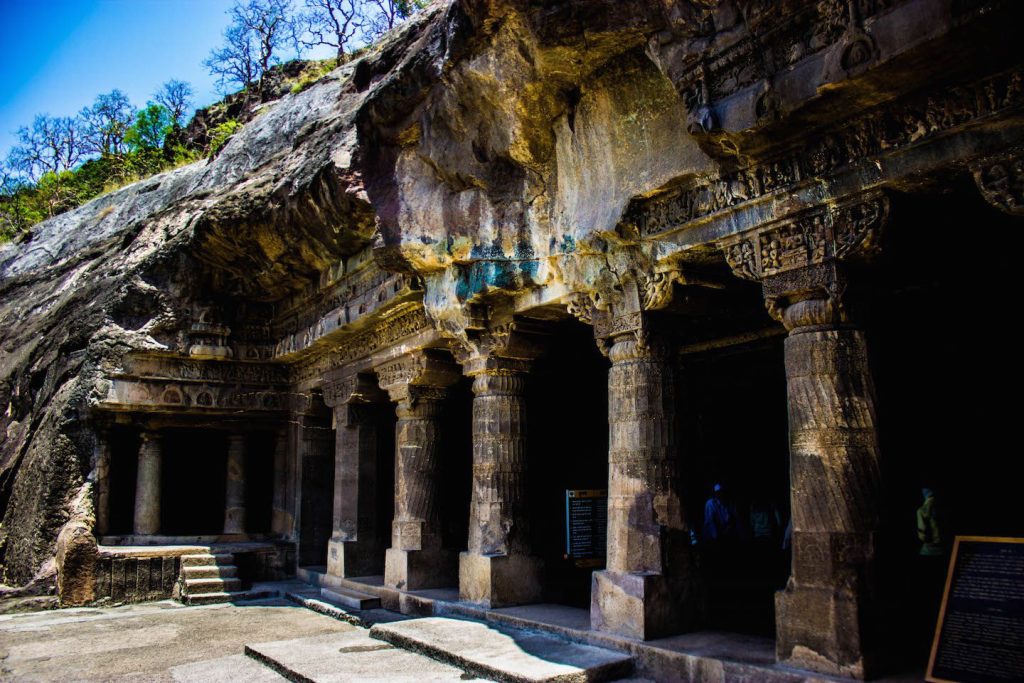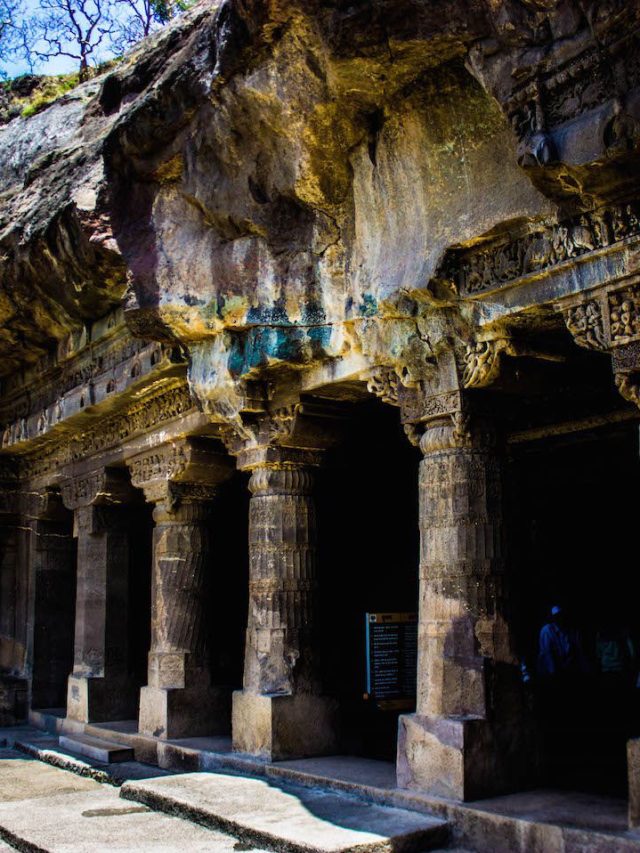The Ajanta Caves, located in Maharashtra, India, are a masterpiece of ancient Indian artistry dating back to the 2nd century BCE and 5th century CE. These caves, carved into the horseshoe-shaped rock, house some of the finest examples of early Buddhist religious art. Known for its exquisite wall paintings, Ajanta is a treasure trove of vibrant frescoes depicting scenes from the life of Buddha, celestial beings, and everyday life in ancient India. Let’s take a look at a few paintings found within the complex.
1. Vajrapani
Located in cave number 1 is the mural of Vajrapani. He wears a crown, and regal clothing and holds a ‘vajra’ or thunderstorm in his right hand. Next to him is an attendant with a tray of lotuses. Vajrapani, another name for Indra, is a masculine deity connected to strength and power. The weapon symbolises strength and power. It also represents the resilience of the human spirit in the face of hardship. It is said that Vajrapani uses the ‘vajra’ to defend the Buddha and his teachings. His eyes pointed nose, and plump lips convey a powerful and majestic assurance in honeycomb-style design.
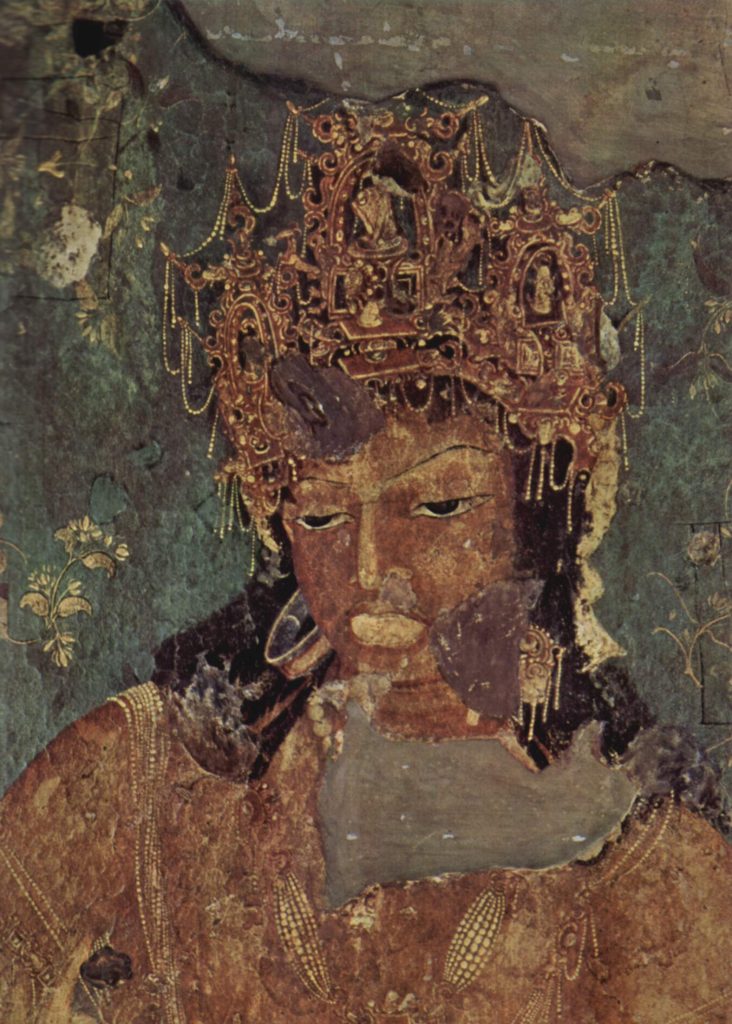
2. Padmapani
The painting of Bodhisattva Padmapani is located in cave number 1. It depicts Buddha’s previous life in his avatar Bodhisattva Avalokitesvara or Padmapani. The mural of Bodhisattva Padmapani is considered an amazing illustration of the Gupta style. The painting is dated to the late 6th century CE. It displays an uncharacteristic attempt at realism; unprecedented at the time. The unknown artist emphasized Padmapani’s full lips, thin nose and waist, almond-shaped eyes, and sinuous, elongated eyebrows using light and shade. The lime plaster was painted with the natural pigments of red, black, and green. Padmapani is seen grasping a ‘padma’ or lotus flower in his right hand. He is wearing a royal crown and is flanked by attendants.
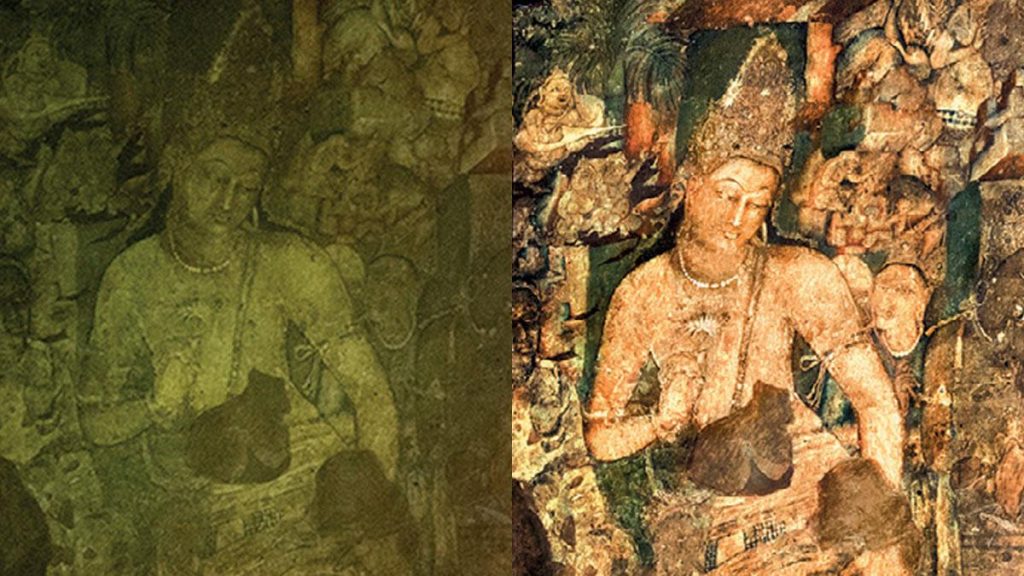
3. Buddha and Rahula
Located in cave number 17, is the fresco depicting Buddha and Rahula. Here Gautama Buddha, visiting Kapilavastu accepts a bowl of rice from his son Rahula, who carries an inquisitive expression. The image also shows Gautama’s wife, Yasodhara in agony over her husband’s changed ways. It was most likely painted in the sixth century CE. In contrast to Yashodhara and Rahula, Buddha is shown in the painting as a large, illuminated body. The artist has used symbolism to narrate the simple story.

4. The Dancing Girl of Ajanta
The Dancing Girl of Ajanta is another painting at cave number 1. It is a small section from the Mahajanaka Jataka panel dated to 6-7th century AD. It captures the poise and grace of this court dancer. The hand gestures give the dancing girl of Ajanta, an S-shaped rhythm and fluidity of line. The arms are spotted in purple and white, and the body is a simple shade of yellow. The sleeves curve into the yellow and the arms are fitted snugly. It is assumed that either tie dye or block printing was used to create the spots. The body is form-fitting beneath the bust and over it, with a knee-length apron at the end. The bodice’s back encircles the ribs. Though they could be seen as veils, the three wispy white lines sticking out from the dancer’s back are ties from the bodice.
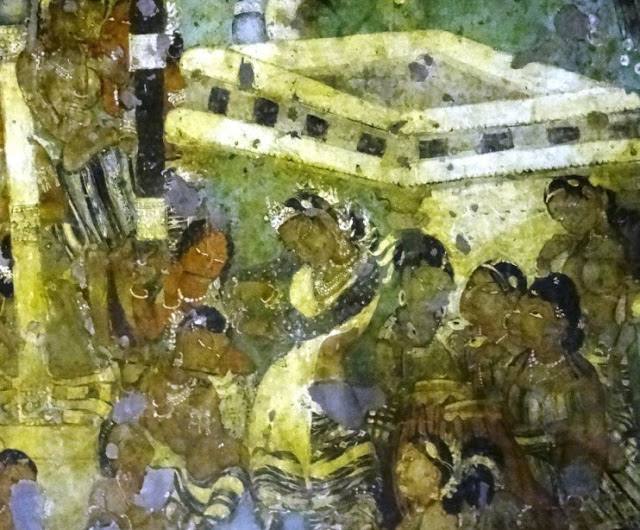
5. Thousand Buddhas of Ajanta Cave
Located in cave number 2 is the Thousand Buddhas of Ajanta Cave or The Miracle of Sravasti. The painting showcases an assortment of small Buddha figurines sitting in different yoga positions. The thousand Buddhas of Ajanta Cave are neatly arranged in a rectangular frame and are situated close to the sanctum.
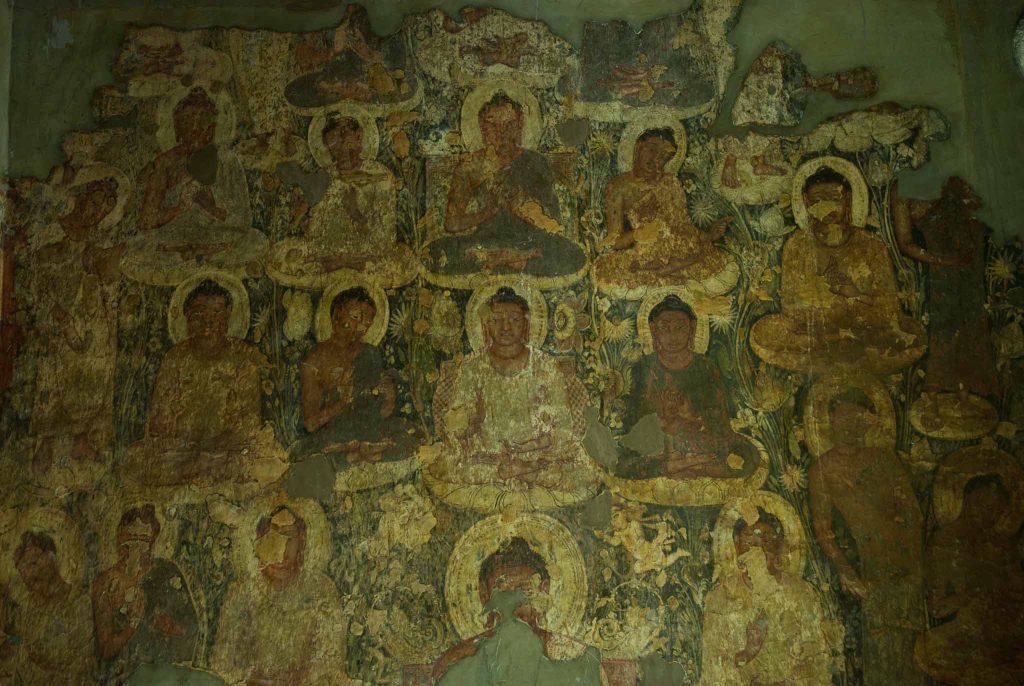
6. Bhagavatprasuti
The birth of the Gautama Buddha or Bhagavatprasuti is depicted in cave number 2. The story begins with Maya, the queen of Kapilavastu, seeing a vision of a white elephant with six trunks. Scholars interpret it as a dream from God, and they foretell Maya’s conception of a divine child. This is the tale of Bhagavatprasuti, realised in an incredibly colourful fresco. The Bodhisattva and the other Gods are talking about his next birth.
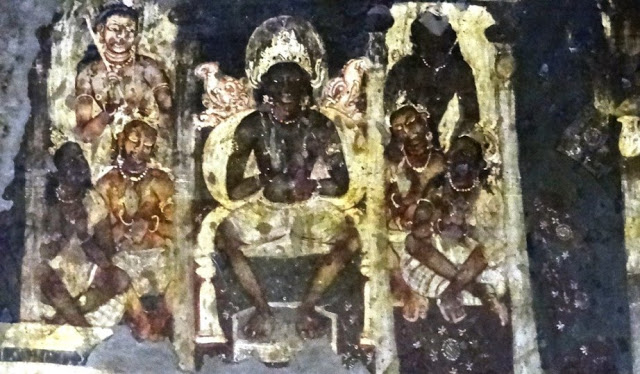
7. Dhanapala Narrative
The Dhanapala narrative is painted on the porch of cave number 17. It depicts Buddha defeating the Nalagiri elephant. King Ajatashatru’s enraged pink pet elephant is shown running berserk in the streets. The Dhanapala narrative showcases Buddha calming Dhanapala. The vibrant details lend to the dynamic. The mural dates to the sixth century A.D. or so.
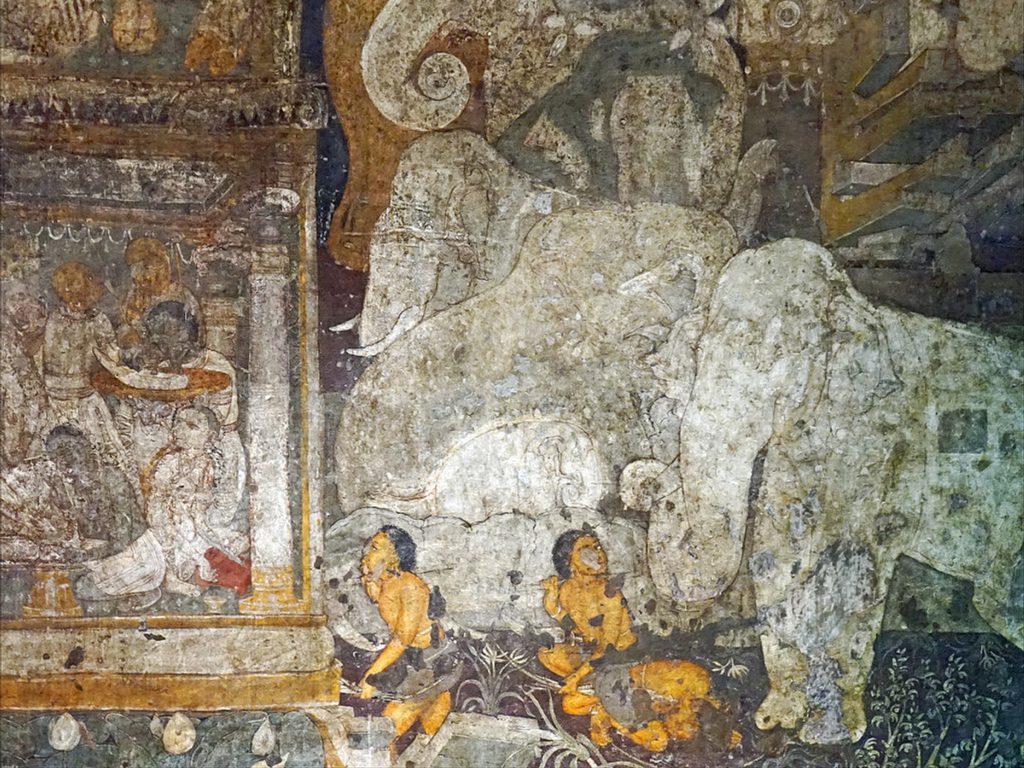
8. Udayin Narrative
Another masterpiece situated in cave number 17 is the Udayin narrative. This vivid painting tells the tale of Udayin and Gupta, covered in flashes of orange, emerald blue, vermillion, and red. Udayin served in the court of King Suddhodhana who fell in love with Gupta. Instead of pursuing his love interest, he follows Gautama Buddha, giving up on the material world. This painting details Gupta’s attempts to stop Udayin.
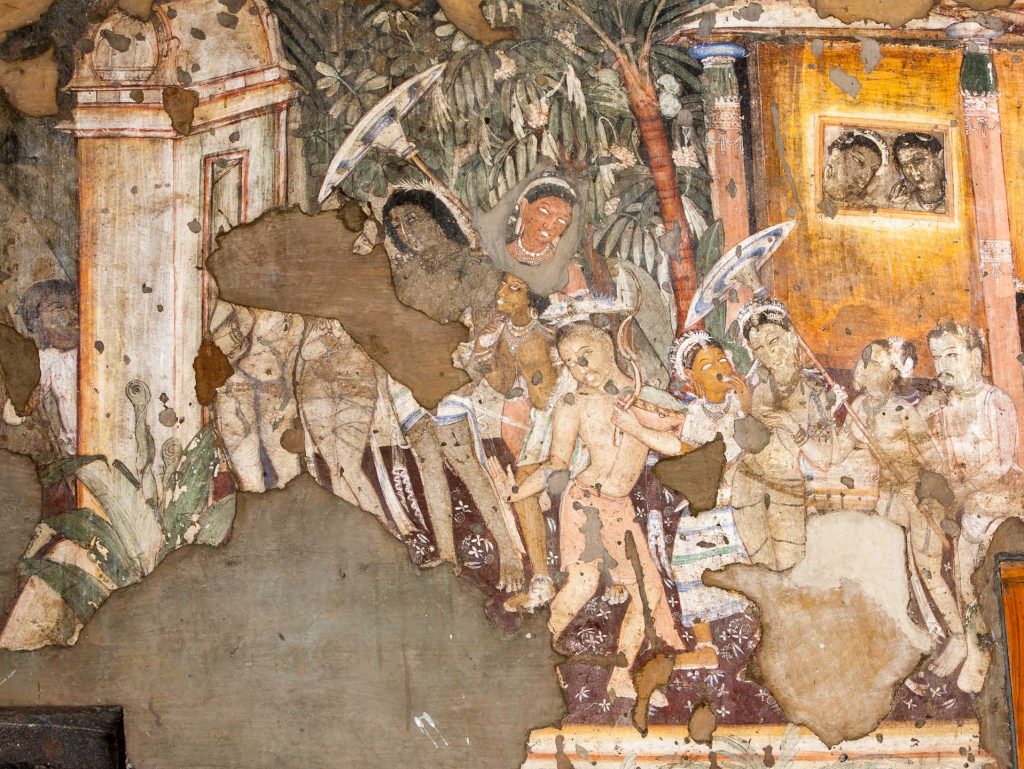
9. Painting of King Mahajana
The painting of King Mahajana is a vivid painting from cave number 1. It depicts the fable of King Mahajanaka who aspired to become a monk and follow Gautama Buddha’s teachings. This mural shows Queen Sivali, visibly upset at the choice, attempting to keep Mahajanaka in the palace. The painting of King Mahajana showcases Sivali in her finest clothes and jewellery dancing and seducing the the king.
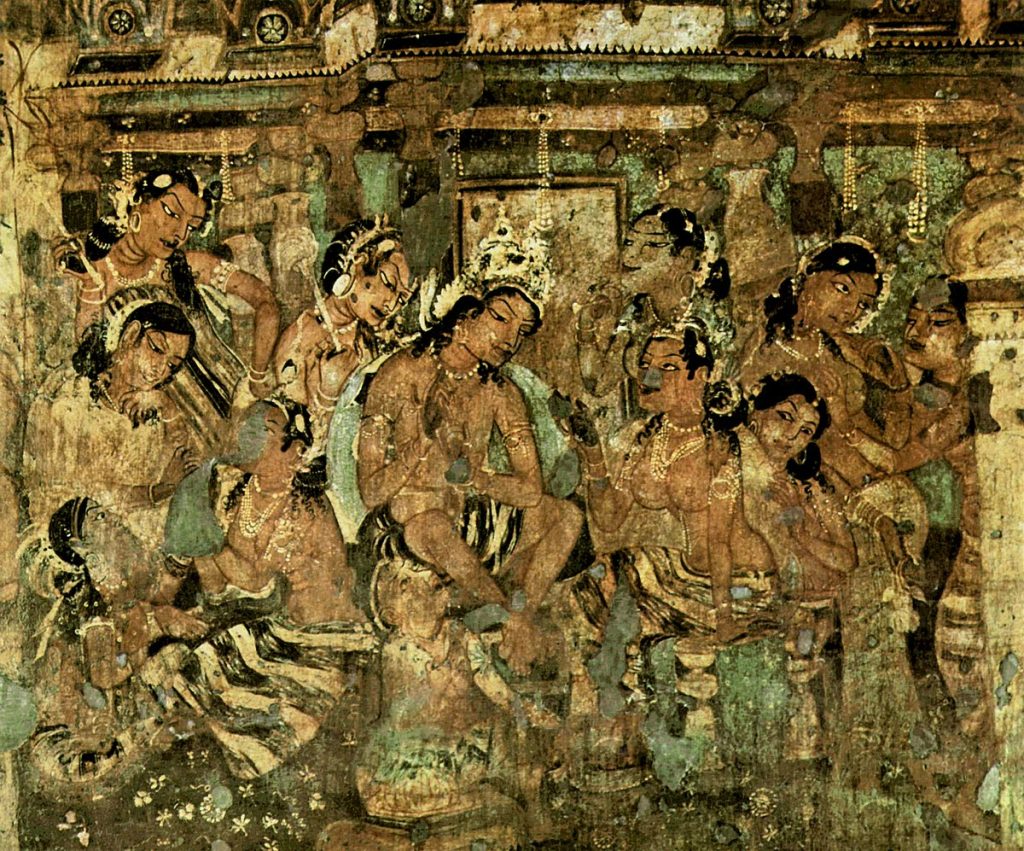
10. Samsara Chakra
The Samskara Chakra, located in cave number 17 depicts various realities. However, a significant chunk of this painting is damaged. The ‘wheel of existences’ or Samsara Chakra showcases six possible forms of existence within the wheel segments. Starting with the section on the left, there are gods, humans, animals, and ‘asuras’ (demi-gods). Ghosts and hell-dwellers are the two realms which have been chipped away.

Image Courtesy – Our Global Trek

